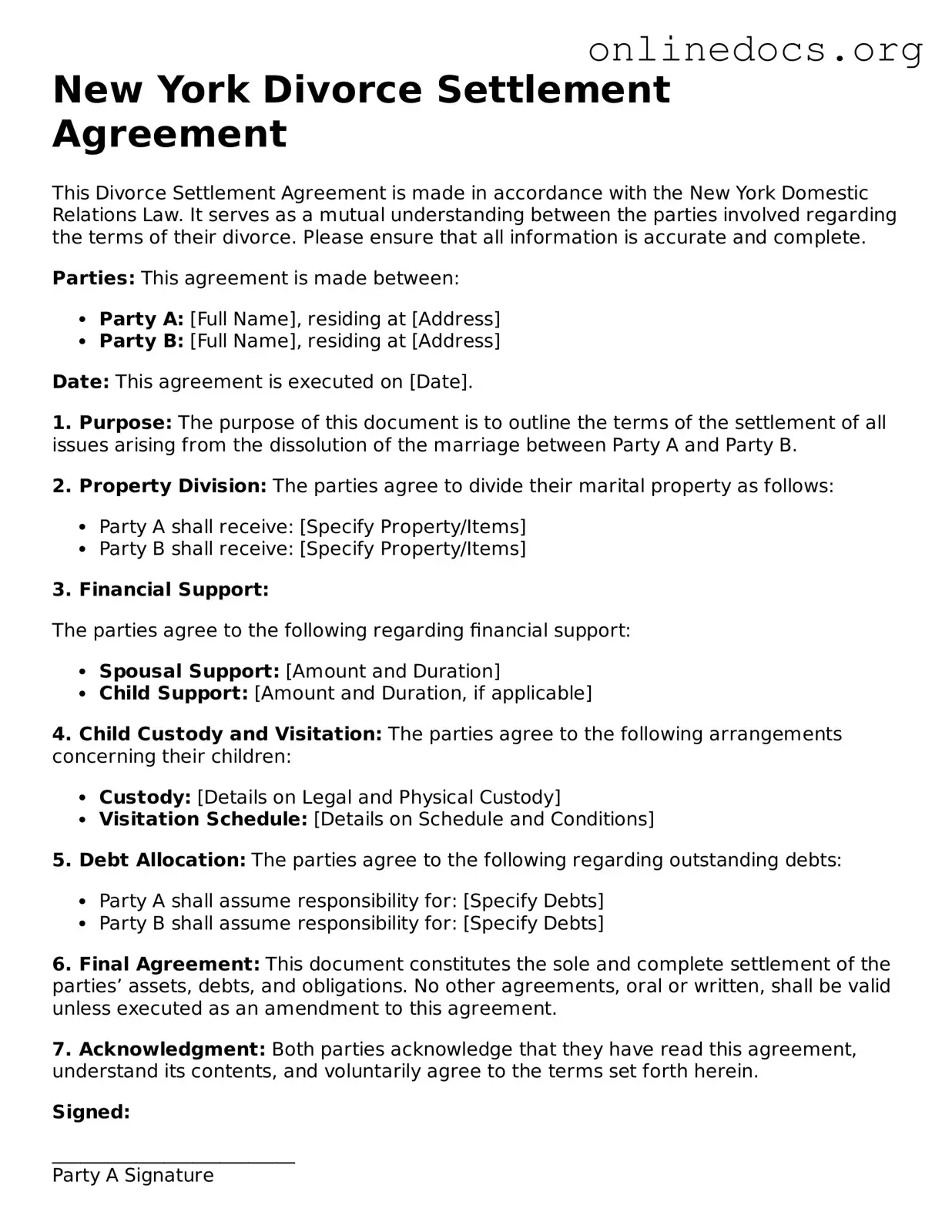The New York Divorce Settlement Agreement form bears similarities to the Marital Settlement Agreement. Both documents serve to outline the terms agreed upon by spouses regarding the division of assets, debts, and responsibilities post-divorce. They provide a clear framework for how the couple will manage their financial and custodial arrangements, ensuring that both parties have a mutual understanding and legally binding terms to follow.
For those navigating the complexities of vehicle ownership transfer, it's crucial to utilize the appropriate documentation. The California Motor Vehicle Bill of Sale form is one such essential document that solidifies the sale transaction between the buyer and seller. To assist you in acquiring and completing this necessary form, you can visit https://fillpdf-forms.com for further guidance.
Another comparable document is the Separation Agreement. This agreement is often utilized when couples choose to live apart but are not yet ready to finalize a divorce. Like the Divorce Settlement Agreement, it addresses issues such as property division, child custody, and support obligations. The goal is to create a structured plan that governs the couple's relationship during the separation period.
The Child Custody Agreement is also similar, focusing specifically on the care and upbringing of children following a divorce. While the Divorce Settlement Agreement covers a broader range of issues, the Child Custody Agreement zeroes in on parental responsibilities, visitation schedules, and decision-making authority. Both documents are essential for ensuring that the needs of children are prioritized during and after the divorce process.
Additionally, the Property Settlement Agreement shares similarities with the Divorce Settlement Agreement. This document specifically addresses the division of marital property and debts, detailing how assets will be allocated between the parties. It is crucial for preventing future disputes and ensuring that both parties are clear on their rights and obligations regarding shared property.
The Spousal Support Agreement is another relevant document. This agreement outlines the financial support one spouse may provide to the other following a divorce. Like the Divorce Settlement Agreement, it establishes clear terms regarding the amount, duration, and conditions of support, helping to alleviate financial uncertainty for both parties involved.
The Parenting Plan is closely related as well. This document outlines the specific arrangements for the care and custody of children, including schedules for visitation and holidays. While the Divorce Settlement Agreement may touch on these topics, the Parenting Plan provides a more detailed and structured approach to parenting responsibilities, ensuring that both parents are on the same page regarding their children's welfare.
The Financial Disclosure Statement is another document that complements the Divorce Settlement Agreement. This statement requires both parties to disclose their financial situations, including income, assets, and liabilities. Transparency is key in the divorce process, and this document helps ensure that both parties are fully informed when negotiating terms in the Divorce Settlement Agreement.
Lastly, the Quitclaim Deed is relevant in the context of property division during a divorce. This legal document is used to transfer one spouse's interest in a property to the other. While it is not a settlement agreement in itself, it often accompanies the Divorce Settlement Agreement to finalize the transfer of ownership as outlined in the settlement terms, thereby facilitating a smoother transition for both parties.
